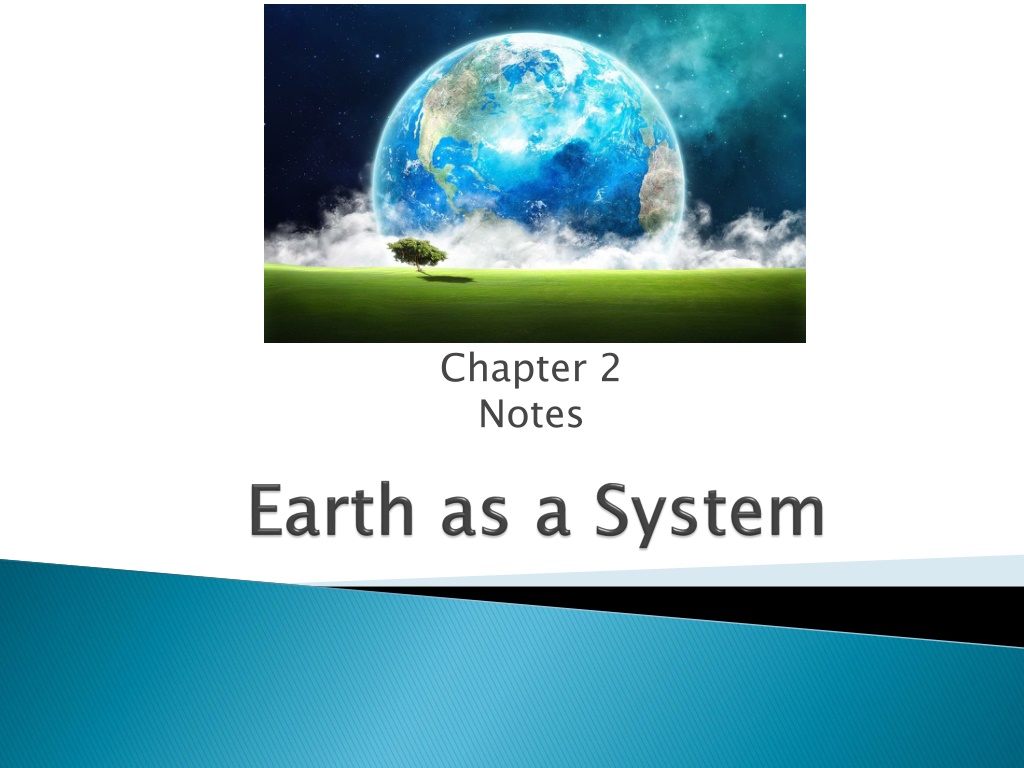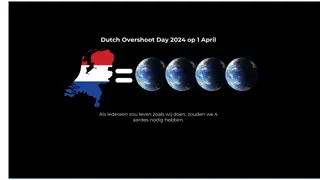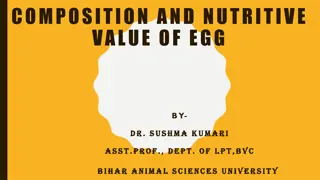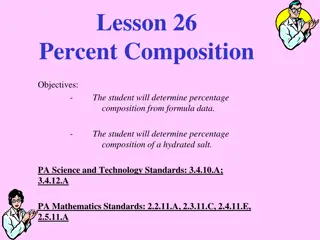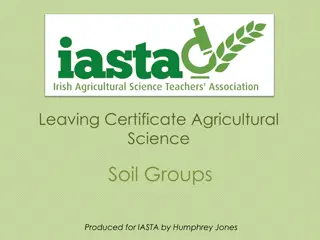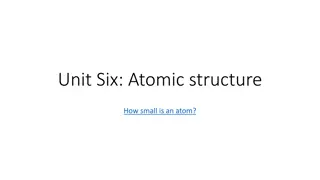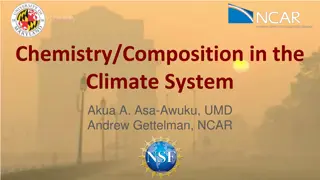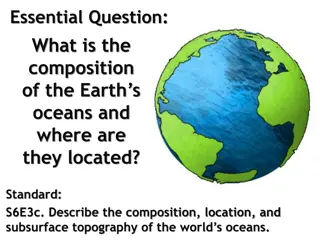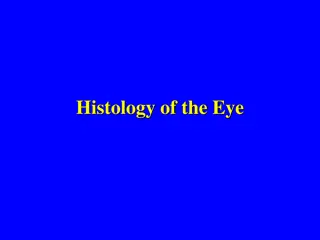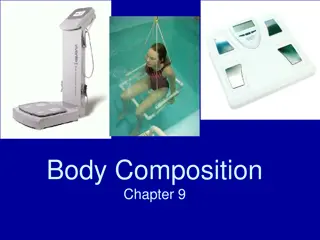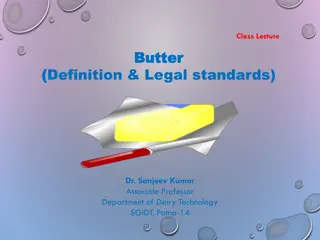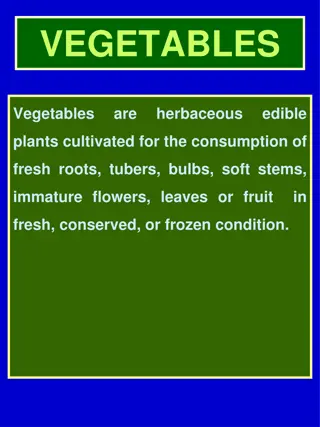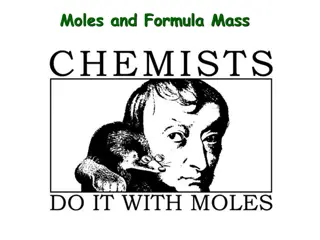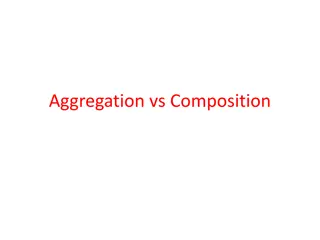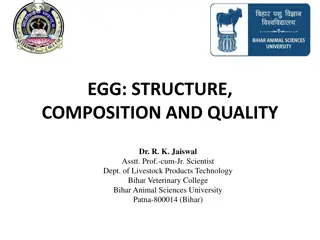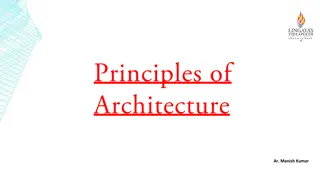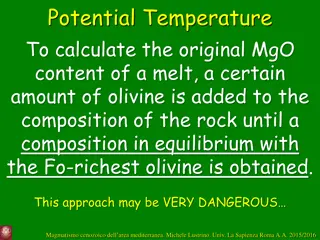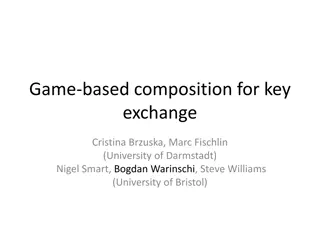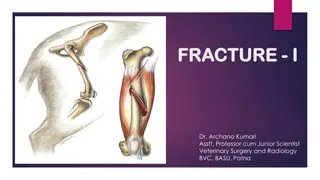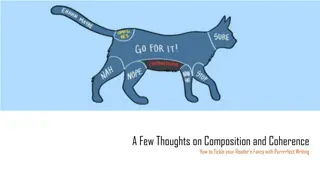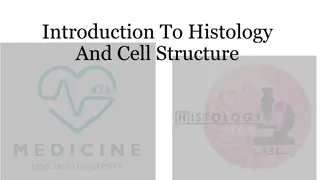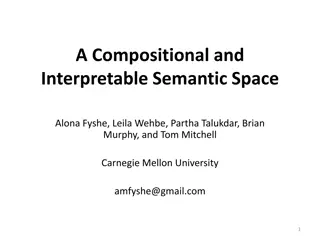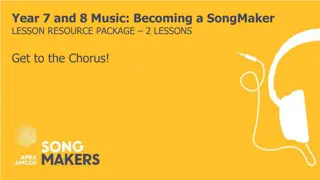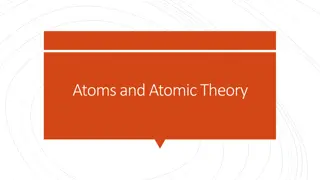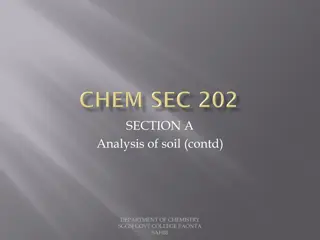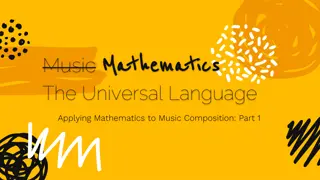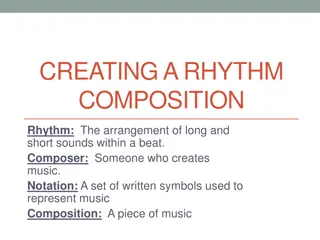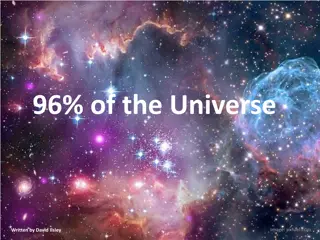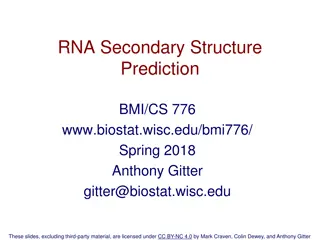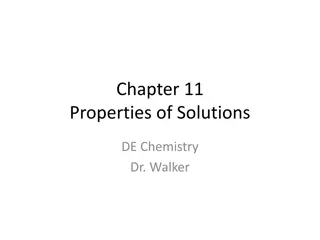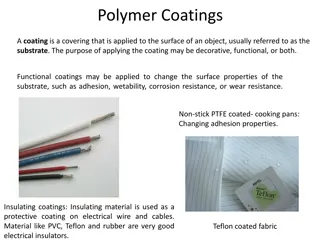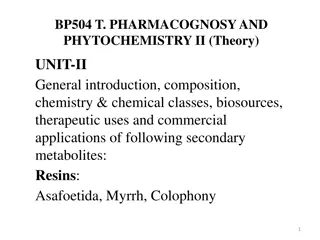Exploring Earth's Composition and Structure
Delve into the depths of Earth's layers from the crust to the core, learning about its compositional and structural zones. Discover the significance of seismic waves in unraveling the mysteries of Earth's interior, and grasp the fundamental concepts behind the planet's lithosphere and asthenosphere.
Download Presentation

Please find below an Image/Link to download the presentation.
The content on the website is provided AS IS for your information and personal use only. It may not be sold, licensed, or shared on other websites without obtaining consent from the author. Download presentation by click this link. If you encounter any issues during the download, it is possible that the publisher has removed the file from their server.
E N D
Presentation Transcript
http://sathiyam.tv/english/wp-content/uploads/2013/01/Earth-Landscape-Art.jpghttp://sathiyam.tv/english/wp-content/uploads/2013/01/Earth-Landscape-Art.jpg Chapter 2 Notes
Use 5 sheets of paper to make a booklet for this chapter
On inside of front cover: number pages using front and back of page Pg. 1-Earth Basics Pg. 2-Earth s Interior Pg. 3-Compositional Zones Pg. 4-Structural Zones Pg. 5-Earth as a Magnet Pg. 6-Gravity and the Earth Pg. 7-Earth System Pg. 8-Earth s 5 Spheres Pg. 9-Energy Budget Pg. 10-Nitrogen Cycle Pg. 11-Carbon Cycle Pg. 12-Phosphorous Cycle Pg. 13-Water Cycle Pg. 14-Ecosystems Pg. 15-Energy Pyramid and Food Webs Pg. 16-People and the Earth
Brain Pop: Earth third planet from the sun about 4.6 billion years old and is made mostly of rock. about 71% of Earth s surface is covered by a thin layer of water (global ocean). an oblate spheroid, or a slightly flattened sphere. Earth s pole-to-pole circumference is 40,007 km. Its equatorial circumference is 40,074 km. average diameter is 12,756 km.
Scientists use seismic waves to learn about the interior (earthquakes or explosives) three major compositional zones and five major structural zones. Brain POP: http://www.brainpop.com/science/earthsyste m/earthsstructure/
crust Earth above the mantle Oceanic crust, which lies under the oceans, is only 5 to 10 km thick. (younger, thinner) The continental crust varies in thickness from 15 km to 80 km. (older, thicker) mantle between Earth s crust and core- nearly 2,900 km thick and makes up almost two-thirds of Earth s mass. crust the thin and solid outermost layer of mantle in Earth science, the layer of rock
core mantle-composed of nickel and iron, radius is about 3,500 km. core the central part of Earth below the
five structural zones lithosphere upper part of the mantle, 15 to 300 km thick. asthenosphere mantle beneath the lithosphere; made of mantle rock that flows very slowly, which allows tectonic plates to move on top of it, about 200 to 250 km thick. lithosphere the solid, crust and the rigid asthenosphere the solid, plastic layer of the
five structural zones Mesosphere lower part of the mantle between the asthenosphere and the outer core, thickness of about 2,900 km. Below the mesosphere is the liquid outer core. The outer core surrounds the solid inner core, which begins at a depth of 5,150 km. Mesosphere- -the middle sphere ; the strong,
Earths magnetic field extends beyond the atmosphere and affects a region of space called the magnetosphere Scientists think that motions within the liquid iron of Earth s outer core produce electric currents that in turn create Earth s magnetic field.
Mass Mass Weight Weight Gravity Gravity Description How is it measured? Metric Units Can it change? Explain
A measurement of the amount of matter in an object Measured using a scale Units: grams Mass does not change unless matter is added or removed
A force due gravitational pull on an object Measured using a scale or spring scale Units: Newtons Weight can change with location- depends on the amount of gravitational pull on an object. (An object s weight depends on its mass and its distance from Earth s center)
Gravity all matter in the universe. depends on the masses distance gravitation) Units: m/s2 (meters per seconds squared) Gravitational force can change with change of location (planet) Interesting note: Because the distance between Earth s surface and its center is greater at the equator than at the poles, the weight of an object at the equator is about 0.3% less than its weight at the North Pole. Gravity -force of attraction that exists between masses of the objects and the distance between the objects. (Newton s law of
Matter space. Energy (Energy can be transferred in a variety of forms, including heat, light, vibrations, or electromagnetic waves.) A system can be described by the way that matter and energy are transferred within the system or to and from other systems. Matter is anything that has mass and takes up Energy is defined as the ability to do work.
Open Systems An open system is a system in which both energy and matter are exchanged with the surroundings. Closed Systems A closed system is a system in which energy, but not matter, is exchanged with the surroundings. Open Systems Closed Systems
Technically, all systems that make up the Earth system are open, but matter exchange is limited. Energy enters the system in the form of sunlight and is released into space as heat. Note: Only a small amount of dust and rock from space enters the system, and only a fraction of the hydrogen atoms in the atmosphere escape into space.
The Atmosphere The Hydrosphere The Cryosphere The Biosphere The Geosphere
The Atmosphere: a mixture of gases that surrounds a planet, moon, or other celestial body provides the air you breathe shields Earth from the sun s harmful radiation
The Hydrosphere the portion of the Earth that is water The Hydrosphere 97% of this water is contained in the salty oceans. The remaining 3% is fresh water.
The Cryosphere Frozen water on the Earth (water in solid form) Glaciers, icebergs, snow
The The Geosphere Geosphere mostly solid, rocky part of the Earth Rock, soil, solid and liquid rock layers of earth.
The Biosphere includes all of the living organisms on Earth (The biosphere is composed of all of the forms of life in the geosphere, in the hydrosphere, and in the atmosphere, as well as any organic matter that has not decomposed). extends from the deepest parts of the ocean to the atmosphere a few kilometers above Earth s surface. The Biosphere
The transfers of energy between Earths spheres can be thought of as parts of an energy budget. Energy cannot be created or destroyed (1st Law of Thermodynamics) Energy becomes less organized over time- spreads out (2nd Law of Thermodynamics) The constant exchange of matter and energy between Earth s spheres happens through chemical reactions, radioactive decay, the radiation of energy, and the growth and decay of organisms.
Nitrogen Carbon Phosphorous Water
Cycles: Cycles: Water Water Nitrogen Nitrogen Carbon / /Oxygen Carbon Oxygen Phosphorous Phosphorous Where Found How used Where Found How used Key Words in the Cycle Key Words in the Cycle
Continuous movement of water Where is water stored? Key Terms include: evaporation transpiration condensation precipitation
Where is carbon stored? Key Terms: Combustion Long term cycle Short term cycle Photosynthesis Respiration Carbon is an essential element for all living things Moves through all of the Earth s spheres Enters atmosphere as CO2 Brain POP: http://www.brainpop.com/science/earthsystem/carboncycle/
Nitrogen in air-soil-plants and animals Nitrogen is removed from air mainly by the action of nitrogen-fixing bacteria in the soil. Key Terms: Nitrogen fixation Bacteria Lightning Brain POP: http://www.brainpop.com/science/earthsyste m/nitrogencycle/
Does not move through the atmosphere-P is rarely a gas Sources of Phosphorous: break down of rock, animal waste Plants take up P-pass it to animals when plant is eaten Key Terms: Decomposition Weathering Runoff
Biotic and abiotic components Can be small or large Contain producers, consumers and decomposers Carrying Capacity: the largest population that an environment can support
Watch the Brain POP on Food Webs Shows energy transfer Food webs are more complex than food chains Photosynthesis is used by plants (producers) to make their own chemical energy from sunlight Arrows in food web indicate the direction of energy transfer
http://ed101.bu.edu/StudentDoc/Archives/ED101fa09/tje50/Images%20WS/foodweb-1.gifhttp://ed101.bu.edu/StudentDoc/Archives/ED101fa09/tje50/Images%20WS/foodweb-1.gif
Frog Mouse Eagle Snake Grasses Grasshopper Ant Which are herbivores? Carnivores? Omnivores? What is the difference between a food web and a food chain?
Watch the Brain POP on the Energy Pyramid Energy is lost as you move up the pyramid-10% of the enrgy is transferred through the food web to the next level
Draw a food pyramid for the food web that you constructed.
People can change the Earth by altering ecosystems, introducing pollutants into the environment and overuse of resources.
Did we find mass or weight of our materials in this lab? What is the difference between mass and weight? Which trial represents an open system? Which trial represents a closed system? Explain Compare the change in mass you calculated between Trial 1 and Trial 2. Do both trials follow the law of conservation of mass? Explain What are some possible sources of error in this activity? 1) 2) 3) 4) 5) 6)
